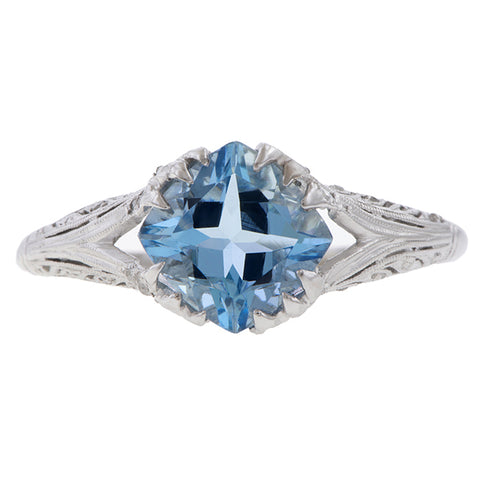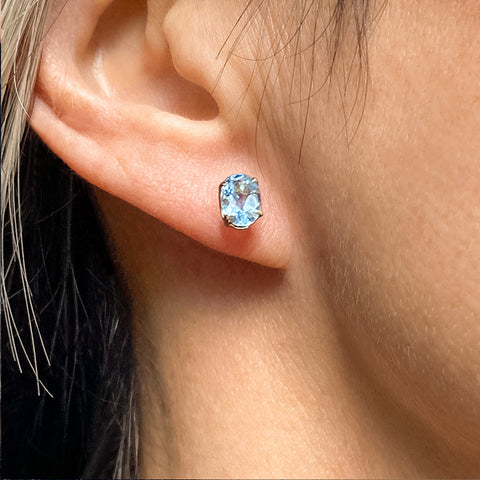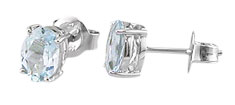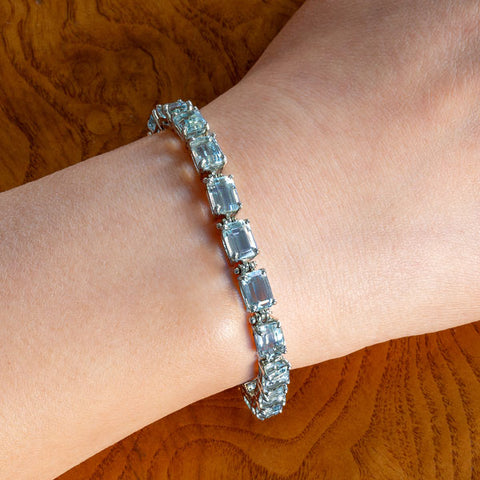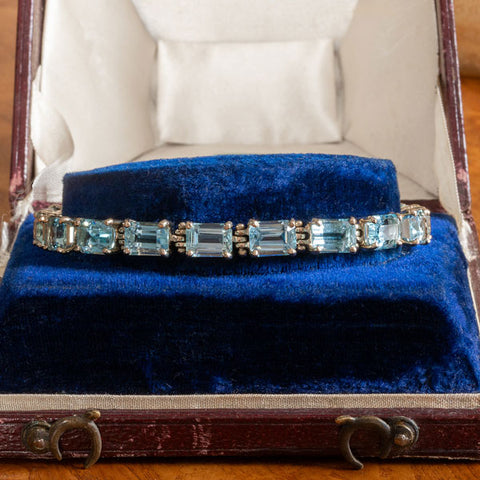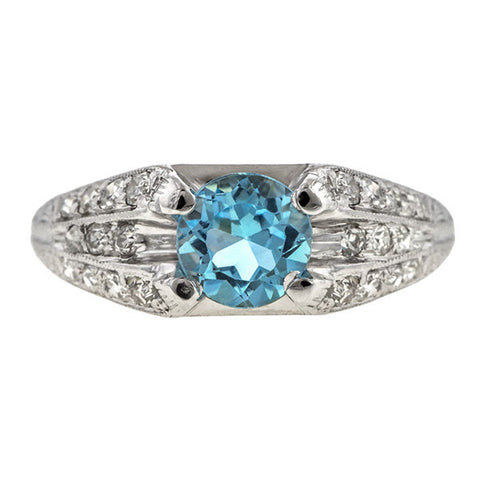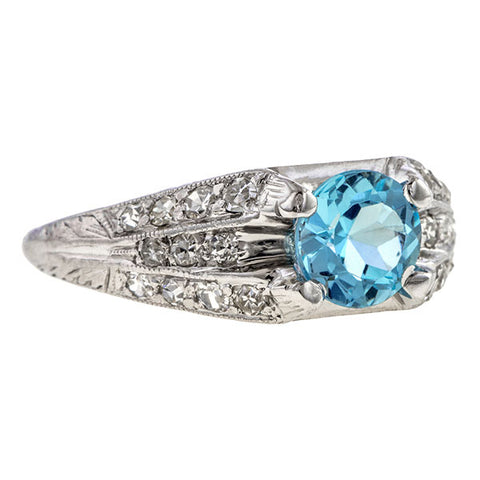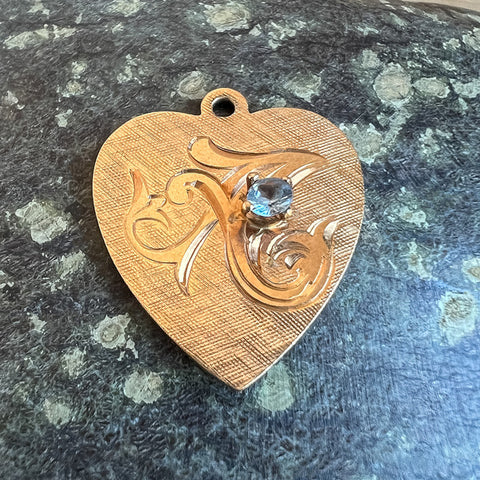Categories
Categories
Aquamarine and its sea-blue hue has enchanted humanity for thousands of years. This mesmerizing gemstone has adorned royal regalia, been the subject of fascinating myths, and continues to be a coveted treasure in jewelry collections worldwide.

Aquamarine belongs to the beryl family of minerals, alongside emerald and morganite. Its name derives from the Latin "aqua marina," meaning "water of the sea" - a perfect description of its tranquil blue to blue-green color.
Historical Legends
The earliest documented use of aquamarine dates back to ancient Greece around 480-300 BCE, where it was prized for its beauty and supposed mystical properties. Greek and Roman fishermen called it the "sailor's gem," convinced it would protect them from the dangers of the sea. Ancient Roman jewelers carved aquamarines into intaglios depicting Neptune, the sea god. Another ancient legend said that aquamarine came from the treasure chests of mermaids and was washed ashore from shipwrecks.
A 13th-century manuscript by Albertus Magnus described an aquamarine amulet worn by nobility for protection during battle. The gem was often engraved with a frog, a symbol that was believed to harness water-related protective powers against enemies.
Symbolism and Lore
Beyond it's connection to the sea, different cultures have ascribed aquamarine with meaning:
- In medieval Europe, aquamarine was thought to reignite love between married couples.
- Many cultures believed it could cure heart, liver, and stomach diseases.
- Roman physician Damigeron claimed in the 2nd century that aquamarine could heal eye ailments.
- March-born individuals claim it as their birthstone, a tradition formalized by the National Association of Jewelers in 1912.

Royal Connections
Throughout history, royalty and nobility have chosen the beguiling blue of aquamarine. In 1953, the president of Brazil presented Queen Elizabeth II with an exquisite aquamarine necklace and earrings as a coronation gift. She was so taken with the gems that she later commissioned a matching tiara. Her 3-piece set, the "Brazilian Aquamarine Parure," remains one of the most spectacular sets in the British royal collection.
The Russian Imperial collection also has several remarkable aquamarine jewels. One of the most famous and mysterious is Empress Alexandra Feodorovna's aquamarine and diamond kokoshnik tiara. The beautiful streamlined tiara was originally thought to have been created around 1900 by Fabergé, the renowned Russian jeweler. More recent research, however, determined that another storied jeweler with royal ties, Koch in Germany, made the tiara in 1910.
Mining and Notable Discoveries
Brazil emerged as the primary source of aquamarine in the early 18th century. In 1910, the largest aquamarine ever discovered was unearthed in Marambaia, Minas Gerais, Brazil. This extraordinary crystal weighed approximately 110 kg (243 pounds) in its rough form. After cutting, it yielded thousands of carats of gemstones.

Another remarkable find occurred in 1992 when miners in Minas Gerais discovered an aquamarine crystal weighing 89.5 pounds. After cutting, it produced a stunning 57.07-carat stone named the Dom Pedro, currently housed in the Smithsonian National Museum of Natural History. Other significant aquamarine deposits are found in Madagascar, Nigeria, Zambia, Pakistan, and Russia.
Antique Aquamarine Jewelry by Period
Victorian (1837-1901)
Early Victorian aquamarine jewelry often displayed naturalistic designs, while the Grand Period (1861-1880) saw more ornate pieces. During the mourning period following Prince Albert's death, aquamarine jewelry remained popular. Its subtle, peaceful blue was considered appropriate even during half-mourning. Late Victorian aquamarine jewelry incorporated stars, crescents, and other celestial motifs, often pairing the blue stone with seed pearls and diamonds in delicate gold settings.
Edwardian (1901-1915)
During the Edwardian period, aquamarine found its perfect showcase in the delicate platinum designs of the time. Edwardian jewelry is characterized by lacy platinum settings in elegant motifs, including bows and stylized florals. The white metal highlighted bright white diamonds with pops of color, including aquamarine.

Art Deco (1920s-1930s)
The Art Deco movement reimagined aquamarine in bold, geometric designs. The most popular cut was an emerald cut or other step cuts. Emerald cuts showcased the aquamarine's clarity and serene blue color while embodying the era's modern aesthetic. Art Deco aquamarine jewelry features geometric lines, colorful gemstones in bold combinations, and a range of cultural and artistic influences.
Retro (1940s)
During World War II, when platinum was restricted for military use, aquamarine experienced a resurgence in the rose and yellow gold jewelry of the Retro Moderne period. The gem's cool blue provided striking contrast against these warmer metals. Large, bold cocktail rings featuring substantial aquamarines, often 20+ carats, became fashionable during this period. These statement pieces typically featured rectangular step-cut aquamarines in raised settings with diamond or ruby accents along the shoulders.

Caring for Aquamarine Jewelry
With a hardness of 7.5-8 on the Mohs scale, aquamarine is relatively durable but still requires careful handling, especially in antique settings. To care for your aquamarine jewelry (and most other gemstone jewelry):
- Clean gently using warm, soapy water and a soft brush, like and old toothbrush.
- Avoid ultrasonic cleaners, particularly for pieces with delicate settings.
- Store separately from harder gemstones, like diamonds and sapphires, to prevent scratching.
- Protect from prolonged sunlight, which may gradually fade the color of some aquamarines.
- Have Georgian foil-backed jewelry and other delicate antique jewelry repaired only by specialized jewelers.
Each piece of aquamarine jewelry tells a story of the era in which it was created. The varied designs capture not only the stone's timeless beauty, but also the artistic sensibilities and craftsmanship of its time.



